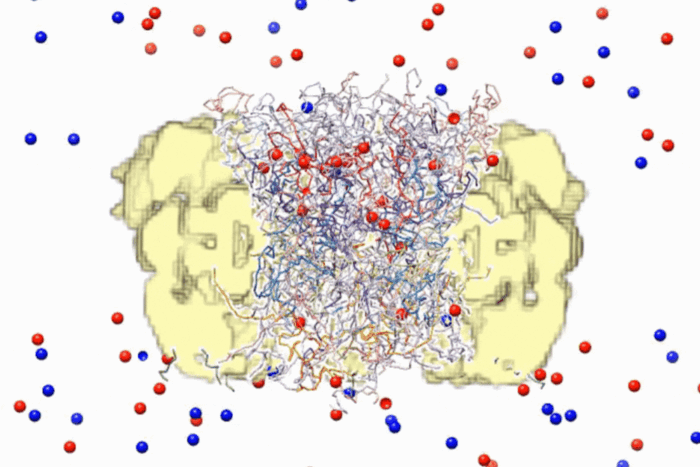Mouse produced from cloning a single neuron yields answers about the genetics of olfaction
The “Sleeper” project
Like your nose, your immune system is primarily a detection device. Its chief job is to detect and identify molecules. Just as there is an almost infinite number of smells, there’s a nearly infinite number of microbial invaders that must be properly distinguished from one another in order for you body to resist infection.
Yet both the olfactory and immune systems can detect this infinite number of substances by using a finite number of genes.
Scientists know how the immune system accomplishes this task: it combines pieces of genes in a process called DNA rearrangement, which results in irreversible changes to the genetic material of the cell. What they didn’t know was whether or not the smell-detecting nerve cells in the nose do the same thing.
To find out, scientists led by Rockefeller’s Peter Mombaerts, M.D., Ph.D., did something a little amazing: they used cloning technology to produce an entire mouse from the DNA in just one of the animal’s neurons. They then traced the spread of that neuron’s nucleus as the mouse embryo developed and eventually as the mouse itself grew.
The findings are reported in the March 25 issue of the journal Nature.
“We and many other scientists have been looking for changes in genetic material of olfactory neurons that, it now turns out, do not occur,” says Mombaerts, who is professor and head of the Laboratory of Developmental Biology and Neurogenetics at Rockefeller.
To conduct the study Mombaerts, along with Rockefeller colleagues Jinsong Li, Tomohiro Ishii and Paul Feinstein, chose an odorant receptor gene called M71, one of the 1,000 odorant receptor genes in the mouse genome. They permanently linked a green fluorescent protein to M71 so that every cell in which M71 is active lights up green under the microscope.
After inserting the nucleus of the M71 nerve cell into a mouse egg, the scientists were able to literally watch the green spread as the DNA housed in the nucleus is replicated with each cell division.
“Our cells were labeled with fluorescent protein continuously, so even after the nucleus was pulled out and put into an egg, the egg is green, embryo’s stem cells are green, everything else in the mouse embryo is green, because it’s driven from a promoter in the DNA that’s active in all cells,” says Mombaerts. “We have an irreversible marker that shows us that we started with that particular cell.”
Then, using a technique called in situ hybridization, the scientists showed that in addition to producing M71 neurons, cells expressing the green protein also generate other types of olfactory neurons in different parts of the lining of the nose. Therefore, Mombaerts says, olfactory sensory neurons that contain the same DNA that once belonged to an M71-expressing cell are able to express other receptor genes — not just the M71 gene from which they are derived.
The findings, therefore, do not support the hypothesis that irreversible changes in DNA occur when an olfactory neuron’s DNA is expressed.
Perhaps just as important, the scientists found that a neuron that no longer divided could still be coaxed into cell division. “This may prove to be important for the nascent field of therapeutic cloning to produce custom-tailored cellular therapies for people with diabetes and other disorders,” says Mombaerts.
“It shatters the concern that we cannot use post-mitotic cells for nuclear transfer,” says Mombaerts.
Although therapeutic cloning is not the main line of Mombaerts’ research, his lab is at the frontier in their research with mice. With the publication of 16 cell lines in this paper, the total of published mouse cell lines produced by cloning technology has reached 60. Of this worldwide production, 51 – 85 percent – were established in Mombaerts’ Rockefeller lab.
This research was supported by the National Institutes of Health. Ishii is supported by a postdoctoral fellowship from the Human Frontier Science Program.


